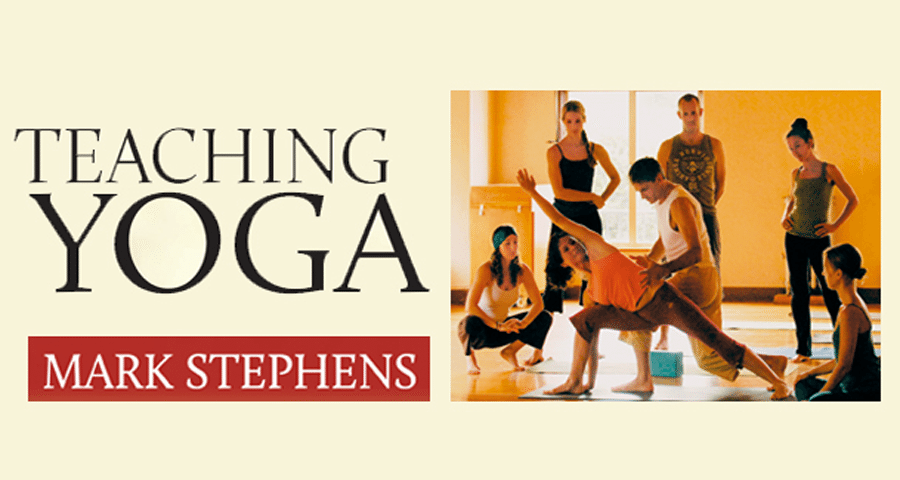Creating fresh and meaningful yoga classes is one of the most fulfilling aspects of teaching yoga. Whether you teach a set sequence style like Ashtanga Vinyasa or Bikram or fashion your own sequences, every class is an opportunity for you and your students to contribute to the creative evolution of yoga. Yet this creative process – coming up with new, accessible, interesting and sustainable classes – can be challenging. That’s where class themes come in, offering a wide array of possibilities for making yoga classes more interesting and memorable.
Themes allow us to more clearly and expansively make connections between various elements of the practice, from alignment principles to refinement of the breath to opening to clearer awareness, potentially awakening students to greater clarity about what brought them to their mat in the first place.
In creating a themed class, start with something that resonates with your own yogic sensibilities and your embodied knowledge and skills as a teacher. Then re-ask yourself why you practice yoga. Write a simple list of what’s most important to you in the practice – and in your teaching. Opening your mind and heart in freely identifying these personal yoga values, here you will rediscover the fertile soil in which to grow your class themes.
In designing a themed class, be attentive to applying basic sequencing principles that help ensure a safe, sustainable, and transformational practice.
Here are five ideas for class themes:
Action in the Body: Some asana cues can be confusing. For example, externally rotating the arms in tadasana (mountains pose) can seem opposite to the same action in urdhva hastasana (upward hand pose). This confusion can be a source of strain when attempting to extend the arms overhead in poses like utthita parsvakonasana (extended side angle pose). Making external rotation of the arms the class theme will reduce this confusion and free students to move forward in refining other aspects of their practice. Other examples: internal vs. external rotation of the thighs; the relationship between roots and extension; pelvic neutrality in relation to the lumbar spine as the starting point for all other movements of the spine.
Nature and the Cosmos: Let’s say you value being connected to the rhythms of nature and you want to create space in your classes for students to explore this connection. Here you can play with shifts in light and energy associated with the seasons, moon phases, even the time of the day. For example, in moving from the Autumnal Equinox toward the Winter solstice, you can play with adapting the asana and pranayama practices to better preserve energy or use the idea of diminishing light as a trope for exploring the sense of light and dark that pulsates through the rhythms of our lives.
Archetypes & Mythology: The verbal root as in asana includes the idea of ritual, a set of actions with symbolic significance that we can tie into practice to highlight certain areas of personal, emotional, or spiritual experience. One source of symbolism you can tap in your classes is the vast realm of mythological figures found across the world’s diverse cultural landscapes, each offering profound wisdom about the conditions and circumstances of life and consciousness. Whether you’re bowing to the sun in surya namaskara with a sense of deepening connection to the inner sun residing in the spiritual heart center or transcending misunderstanding and complexity through the story of Astavakra (and the arm balance astavakrasana), there are unlimited possibilities.
Asana Families: Emphasizing one asana family throughout a class – say, backbends – allows your students to goo more deeply into that aspect of their practice. Here you can also better focus on how elements of the various asana families are interrelated. For example, rather that treating backbends as an isolated family, you can explore how these asanas gain their fullest expression when the body is naturally warmed through sun salutations and standing poses, hip flexors are opened through lunges, the spinal muscles are made more supple through twists, and the shoulder girdle is more open through specific shoulder stretches.
Chakras: Whether you relate to chakras as subtle energy centers, the emanation of divine consciousness, or useful symbols for reflecting more clearly on the body–mind, chakra-themed classes will give your students a memorable experience to take off their mats and into the world. My seven-day retreats often focus on one chakra each day, with the asana, pranayama, and meditation practices keyed to balancing each one: grounding, creating, manifesting, loving, sharing, awakening to clearer awareness, being in bliss. Part of the fun is in planning sequences that correlate with the chakras and their meaning while offering balanced practices every day.
There are as many class theme possibilities as there are creative yoga teachers. Keep exploring in the fields of spiritual philosophy, postural considerations, polarities of experience and action, subtle energetics, holidays and even current events to offer classes that your students find help them make clearer connections on their own yoga path.
CLICK HERE to learn more about my book, Teaching Yoga.
CLICK HERE to visit my website.
